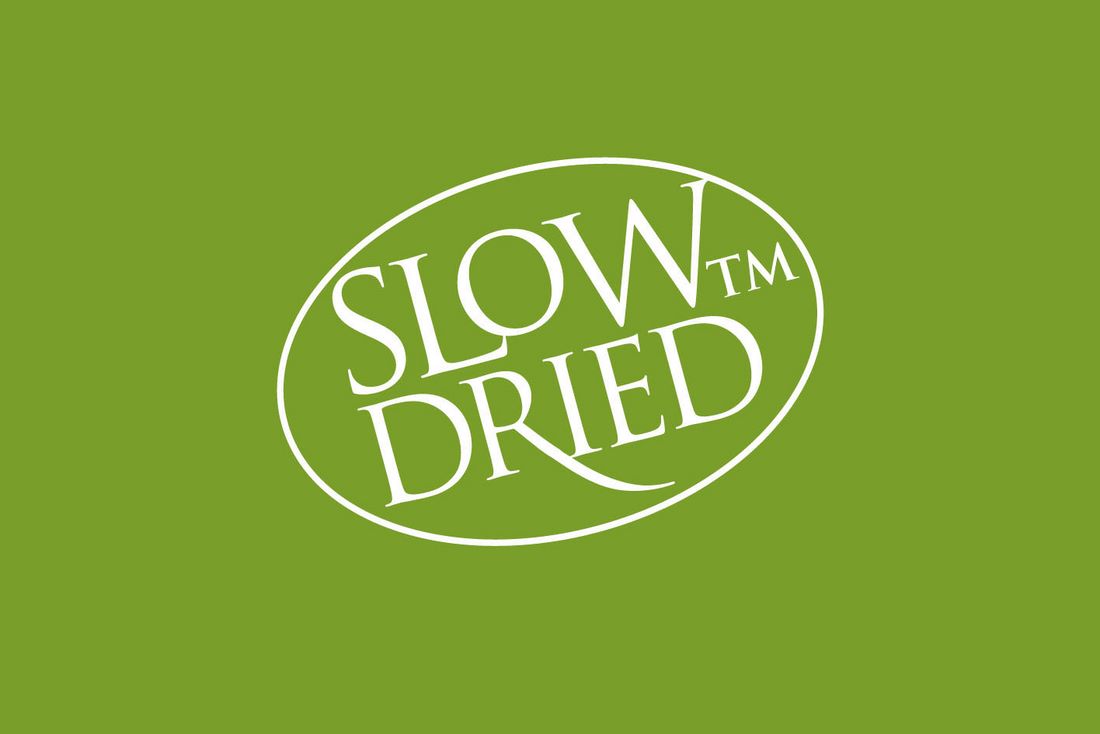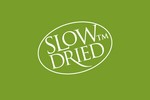Marrowfat Pea, Faba Bean Deluxe Mix *Experimental*
When is a pea a different kind of pea? When they are NEW ZEALAND's sun bioactivated, muted green in color, whole, dried in the field and mature. And, like other SLOW™DRIED products, they are NOT subject to glyphosate accelerator drying [*] 'indicator' crops.
Although peas (species: P. sativum, family: Fabaceae) typically contain high anti-nutrient levels that 'vary not only as a function of maturity but also with the variety' [1], they are a unique source of non-ubiquitous M-Xylohydroquinone (m-XHQ) (considered to be an anti-fertility chemical as it meddles with reproductive hormones estrogen and progesterone), a source of myricetin [^], pinitol [^^], carotene [^^^] and cryptoxanthins [^^^^].
Slow™Dried Faba Beans are now also part of the "value added" mix. Prior to proprietary treatments, which removes some of the water content, they are a "raw" data source (2,500-25,000ppm) of the drug L-Dopa (also produced by high cost 'total synthesis') with clinical use: antiparkinsons. (Tropical Plants Yielding Clinically Useful Drugs. by Farnsworth, N. R. & D. D. Soejarto. 1988. Global importance of medicinal plants (unpublished draft manuscript rev. 23)). And, plant origin tyndallized probiotics (also known as postbiotics), inclusion due to clinical research [incl. Double-Blind tests] "improved digestive health" claims.
This product is currently in an 'experimental' stage whilst NEW ZEALAND certified organic sources are located, content assumptions are challenged and non-UHF methods (eg soaking, sprouting, fermentation, thermodynamics, hydrothermal, shearing, enzymatic [**] and/or phytochemical treatments) are compared for this viable alternative plant protein source.
No more doubt (in ‘that’ pea sprout). “What the survivors do to stay in that league…forward, not has it BACKWARD…few large companies create new categories or commercialise innovations…long-term commitment and persistence that innovation and entrepreneurship require". New Nutrition (p.12 editorial) Apr’11.
Country of Origin: Made in NEW ZEALAND with >90% NEW ZEALAND ingredients.
Detail: Proprietary combined processes including those used by Eat Right Foods Ltd under EATRIGHT® (no application or registration has been made but rights are reserved for SLOWDRIED™, a resurrected part of a 'family' of other ('off balance sheet', not captured in the profit & loss accounts). For instance, [L proprius] processing may include Temp. = Very slow to Cool; Time = Short time processes. Consequently, NO acrylamide warnings [Temp. = Moderately hot or higher; Time = Long time] required.
Address: PO Box 1525 [Level 1, 6 Church St], Nelson 7040, NEW ZEALAND
Packaging: Biocompostable, pre-use stands-up, post-use lies-flat. Home composting enjoys a mix of micro organisms, moisture, heat and oxygen. Also suitable for degradation in a growing number of commercial pack-composting facilities. Tamper-proof-seals, easy tear opener.
Product Details
- [^] Source of Phytochem: Myricetin. PubmedID 17976658. 'Many of our drugs were PATtErNed after natural medicine. Big Pharma...gravitates to more patentable synthetic drugs'. Hypotriglyceridemics: Herbs and Foods Versus the Synthetic SILVER Bullet. Journal of American Herbalists Guild volume 11, #1
- [^^] PhytochemID: Pinitol. PubmedID 18752266. Peas 500ppm. Dr Duke's Phytochemical and Ethnobotanical Databases
- [^^^] Source of alpha-carotene, beta-carotene 18.2ppm, neo-beta-carotene-B, neo-beta-carotene-U. Dr Duke's Phytochemical and Ethnobotanical Databases
- [^^^^] Vitamin-A-Activity. Pea. 1.8ppm Beta-cryptoxanthin, 0.09-0.9ppm Cryptoxanthin Dr Duke's Phytochemical and Ethnobotanical Databases
- PhytochemID: Trigonelline (TRG). Ubiquitous NO. Fruit content 6ppm to 203 ppm (stdDev 1.0). Total activities 15: anticancer and antitumor (cervix, liver) and others Dr Duke's Phytochemical and Ethnobotanical Databases
- [†] Non-tropical Plants Yielding Clinically Useful Drugs. Species: Several other plants [Pisum sativum. Seed. 500ppm] Drug: Pinitol. Action/Clinical Use: Expectorant [Expectorant FEA]. Farnsworth, N. R. & D. D. Soejarto. 1988. Global importance of medicinal plants (unpublished draft manuscript rev. 23)
- Biological Activity: Antiretinitic & retinoprotectant optometry. PhytochemID: LUTEIN (Dr Duke data) Alternative names: β,ε-carotene-3,3'-diol, 4-[18-(4-Hydroxy-2,6,6-trimethyl-1-cyclohexenyl)-3,7,12,16-tetramethyloctadeca-1,3,5,7,9,11,13,15,17-nonaenyl]-3,5,5-trimethyl-cyclohex-2-en-1-ol, xanthophyll (NZ Food Composition)
- Multidrug resistant (MDR) inhibitor: Pea (phytochemID: Genistein 200uM). Dr Duke's Phytochemical and Ethnobotanical Databases
- Activity (pea: whole plant, at all stages of growth, consideration): demulcent. 610,000ppm. Biological activity from (2) chemicals. Dr Duke's Phytochemical & Ethnobotanical Data
- MUTEd green peas (Pantone 159-11C and U). Benchmark testing with dried yellow (Pantone 458C or 7758U) and dried maple/Whero (Pantone 486C or 7576U).
- Hemostat activity (nb. seed rather than mature fruit): cellulose 74-96k ppm, citric acid, cephalin Dr Duke's Phytochemical, Ethnobotanical Databases (pub. '16)
- Very apparent lack of inventive 'value-added' private label products [w or w/o iniquitous] and treatment of food as a 'lost leader' to higher margin [pattern-patent-pill-puzzle] synthetics [****]
- Atmospheric freeze-drying - a Food Industry Enabling Technology (FIET). by Prof. Richard Archer, Lee Huffman et al (pub. Dec17/Jan18 by Food New Zealand)
- [*] Why Is Glyphosate Sprayed on Crops Right Before Harvest? by EcoWatch (pub. Mar’16)
by EcoWatch (pub. Mar’16)
- [**] Information on EC 3.2.1.14 chitinase and [pea] pisum sativum
Schomburg D et al. BRENDA, ELIXIR core data resource on enzymes (pub. 2021), Nucleic Acids Res., 49:D498-D508
- [***] Converting Nitrogen into Protein by François Mariotti, Daniel Tomé & Philippe Patureau Mirand (pub. 2008)
Nx5.36 for pea protein not Nx6.25 currently used for plant proteins
- [****] ‘Medicinal importance [revival], as the economic costs and knowledge of the side-effects of prescription pharmaceuticals increase…contains thousands of useful phytochemicals. Pharmaceuticals usually contain only one or two’
[PEA Purseglove et al. (1981)] CRC Handbook of Medicinal Spices by James A. Duke et al (pub. 2003)
- Pea Viner Corner, Appleby Straight, Nelson, Tasman, New Zealand
Topo Graphical Map. Crown Copyright Reserved.
- [††] New Zealand 'twisted strategy' puzzle. 'Strategy game from New Zealand...mixture of skill and chance'.
interesting brandautopsy.com/2007/02 article with [folk] 'lore' reference
- [1] Different varieties not included here are 'peas (Sugar Snap) PLU 4675' and 'peas (Snow/China) PLU 4092'
PLU or price look up code; International Federation for Produce Standards (IFPS)
- Health Benefits of Heat-Killed (Tyndallized) Probiotics: An Overview
by Piqué N, Berlanga M, Miñana-Galbis D. (pub. 23May19)




